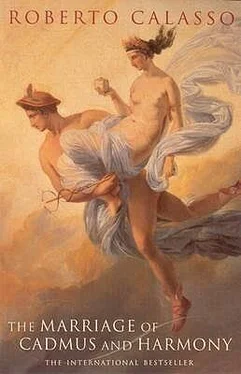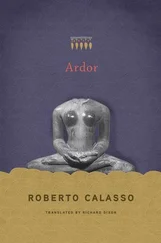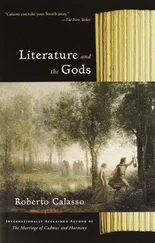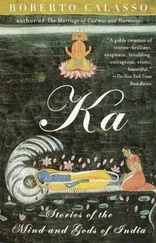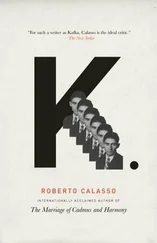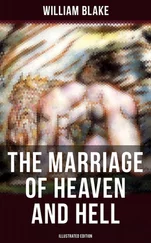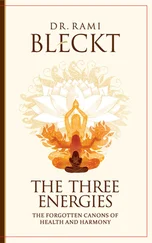Roberto Calasso - The Marriage of Cadmus and Harmony
Здесь есть возможность читать онлайн «Roberto Calasso - The Marriage of Cadmus and Harmony» весь текст электронной книги совершенно бесплатно (целиком полную версию без сокращений). В некоторых случаях можно слушать аудио, скачать через торрент в формате fb2 и присутствует краткое содержание. Год выпуска: 1993, Издательство: Alfred A. Knopf Inc, Жанр: Современная проза, на английском языке. Описание произведения, (предисловие) а так же отзывы посетителей доступны на портале библиотеки ЛибКат.
- Название:The Marriage of Cadmus and Harmony
- Автор:
- Издательство:Alfred A. Knopf Inc
- Жанр:
- Год:1993
- ISBN:нет данных
- Рейтинг книги:3 / 5. Голосов: 1
-
Избранное:Добавить в избранное
- Отзывы:
-
Ваша оценка:
- 60
- 1
- 2
- 3
- 4
- 5
The Marriage of Cadmus and Harmony: краткое содержание, описание и аннотация
Предлагаем к чтению аннотацию, описание, краткое содержание или предисловие (зависит от того, что написал сам автор книги «The Marriage of Cadmus and Harmony»). Если вы не нашли необходимую информацию о книге — напишите в комментариях, мы постараемся отыскать её.
The Marriage of Cadmus and Harmony — читать онлайн бесплатно полную книгу (весь текст) целиком
Ниже представлен текст книги, разбитый по страницам. Система сохранения места последней прочитанной страницы, позволяет с удобством читать онлайн бесплатно книгу «The Marriage of Cadmus and Harmony», без необходимости каждый раз заново искать на чём Вы остановились. Поставьте закладку, и сможете в любой момент перейти на страницу, на которой закончили чтение.
Интервал:
Закладка:
One of the most charming enigmas of the ancient world is the life of Nonnus. Almost nothing is known about him with any certainty, except his place of birth: Panopolis, in Egypt. As to the date of that birth, scholars have varied embarrassingly, but it now seems generally accepted that it must have been in the fifth century A.D. The enigma, however, has to do with the order in which he wrote his works: Nonnus left us the Dionysiaca in forty-eight books (a number equal to the sum of the books in the Iliad and the Odyssey ) and a Paraphrase of St. John’s Gospel.
This great writer, who has often been disparagingly dubbed “baroque,” but in the same spirit could equally well be described as rococo, encrusted his poetry with voluptuous idylls and cosmological secrets. The Dionysiaca are an overflowing summa of the pagan world, a world that should have been on the brink of extinction but that here opens up before our eyes like a meadow of narcissi. What bothers people, though, is the fact that the only other work by Nonnus, his Paraphrase of St. John’s Gospel, presupposes a Christian author. Yet there is nothing that would allow us to claim that the Paraphrase was written after the Dionysiaca . This raises the following questions: did Nonnus celebrate the last, and truly dazzling, lights of the pagan world with his poem on Dionysus, then convert to the new and already dominant faith and write the Paraphrase ? Or was it the other way around: Nonnus, a Christian, was quite suddenly struck by the pagan vision, as though by lightning, and thus went from the Paraphrase to the tidal wave of the Dionysiaca ? Or could one offer a third hypothesis: that Nonnus wrote the Dionysiaca and the Paraphrase at the same time. With one hand he described the adventures of Dionysus while the other evoked the trial of Jesus. His mind was moved by both these divine beings. And perhaps he didn’t even need to ask himself whether he believed in both, because he was writing them.
There are no demonstrable facts to help us solve the enigma. All we have are the texts, the style. And here the rhetorical ploy that most immediately strikes us in all Nonnus’s writing is his redundancy. The Dionysiaca are the most sumptuous celebration imaginable of the redundant variant and the rampantly superfluous. But behind Nonnus the poet lurks Nonnus the theologian. This churning variegation, vain as nature itself, in fact alludes to the ultimate truth of the tale he is telling: that it is precisely those endlessly and meaninglessly shifting colors that lie at the heart of the divine. Nor does the vision change when Nonnus abandons the many gods to tell the story of the only son of the one God. The form he chooses this time is not the epic poem broken into a multitude of idylls but the paraphrase, which is to say redundancy reduced to its essence, so that each of the bare phrases of the Gospel is blown up and up as though by the action of an irrepressible breath and a good dose of yeast.
It is in this choice of style that we may glimpse something of Nonnus’s faith: before being either pagan or Christian, it is a faith in redundancy as the way in which the cosmos makes itself manifest. And if we go on to examine the details of the narrative, there is at least one that would lead us to plump for the most improbable of our hypotheses: that Nonnus wrote the Dionysiaca and the Paraphrase at the same time, or at least without seeing any discrepancy between them. The Dionysiaca are dominated by Oistrus. Time and time again we see him at work, and some of the most torrid erotic scenes begin with the buzzing of that gadfly. But now let’s turn to Palestine, according to Nonnus. The Jews accuse Jesus. And where St. John’s Gospel says: “Say we not well that thou art a Samaritan and hast a devil [ óti daimónion écheis ]?” Nonnus paraphrases: “and now the wandering and vengeful gadfly [ alástoros oîstros ] of the demon Lyssa [Madness] goads you on.” It is a delicate and precise pointer to Nonnus’s consistency: impartial to Dionysus and Christ alike, he constantly finds the same demonic gadfly in both their stories, goading them on to intoxication, frenzy, delirium, illumination.
Fifteen centuries have passed, and the number of readers who have understood Nonnus could be counted on the fingers of one hand. Giovan Battista Marino, who read Nonnus in Eilhard Lubin’s Latin translation (Hanau, 1605), had no doubt about it: Nonnus was the only one who could compete with Homer, the only poet who could empty his work of all heroic sobriety and encourage every possible twirl and caprice while still preserving a quite vast frame all around. This was just what Marino needed for his own Adonis : an ancient authority for at last departing from all those liberations of the Holy Sepulcher and other such bold and noble deeds. With Nonnus behind him, the poet could abandon himself to a project that until now had seemed blasphemous: the weaving together in a massive epic of garland upon garland of erotic verse.
Thus Marino frequently pays Nonnus the supreme homage that one writer can pay to another: theft — and the sweetest of thefts at that, the kind that remains a secret, shared in complicity by the two authors, because no one else notices. With a note of defiance Marino wrote to Achillini: “they [other literati] do not ply the sea where I fish and trade, nor will they ever catch me with my prey, unless I reveal it to them myself.”
As early as 1817, in his essay Nonnos der Dichter , dedicated to Goethe, the learned young Ouvaroff of St. Petersburg, friend of the Senator, i.e., Joseph de Maistre, could justly complain that: “The flowery field of Greek poetry has been so thoroughly tilled that it would be hard indeed to find a poet who has not been appreciated and studied with care, not to say love; Nonnus alone pays for the sins of his age; for centuries his poem has been condemned to being a lumber room invaded by dust and corrosion where only the most zealous mythographer might penetrate. It would be hard to name but a few who have read him for the quality of his poetry, and harder still to name any who have been sufficiently bold to declare that Nonnus was truly a poet, in the full sense of the word.” Another hundred and fifty years would have to pass before Giorgio de Santillana, speaking at a conference, would point to Nonnus’s Dionysiaca as the “blossoming” of that “Japanese flower” that was for him “the archaic myth.”
Jason would have preferred to live a bourgeois life at home, just as Nietzsche would have preferred to be a professor in Basel, rather than God. “I would be happy enough living in my home country, if Pelias would give his consent. May the gods see fit to free me from my labors,” says Jason to Hypsipyle. And his voice is at once that of the ever hypocritical lover trying to soften the cruelty of his desertion and that of the hero who looks, weary and detached, over the scene where he is obliged to kill, cheat, travel, desert, and finally be killed, with any luck by a rotten timber while sleeping in the shade of his ship. The fable’s happy ending is not an option for the hero. His part was written before he was born; his labors predate him: they are never chosen but come to meet him, like a towering wave.
Jason never managed, not even for the briefest of moments, to go beyond his role as hero. He soon realized this and clammed up in gloomy silence. He worked at his adventures: but that was precisely the point, he worked. Even the women he came across, who usually fell in love with him, were part of that work. He abandoned Hypsipyle because he had to press on with his expedition. He promised Medea he would marry her because he had to get hold of the Golden Fleece and needed her help. Then he did marry her, because King Alcinous forced him to; the Golden Fleece was their shining nuptial pallet in the cave of Macris. Then he abandoned Medea, because he had to unite his family with that of the reigning house of Thebes. Everything he did was done to achieve something else, and always in obedience to orders from above. There were days when this made the memory of his cruelest deeds easier to bear: he had done them because they were his destiny. He had traveled far and wide, visited the remotest of peoples, yet had always lived like a donkey plodding around the same well.
Читать дальшеИнтервал:
Закладка:
Похожие книги на «The Marriage of Cadmus and Harmony»
Представляем Вашему вниманию похожие книги на «The Marriage of Cadmus and Harmony» списком для выбора. Мы отобрали схожую по названию и смыслу литературу в надежде предоставить читателям больше вариантов отыскать новые, интересные, ещё непрочитанные произведения.
Обсуждение, отзывы о книге «The Marriage of Cadmus and Harmony» и просто собственные мнения читателей. Оставьте ваши комментарии, напишите, что Вы думаете о произведении, его смысле или главных героях. Укажите что конкретно понравилось, а что нет, и почему Вы так считаете.
